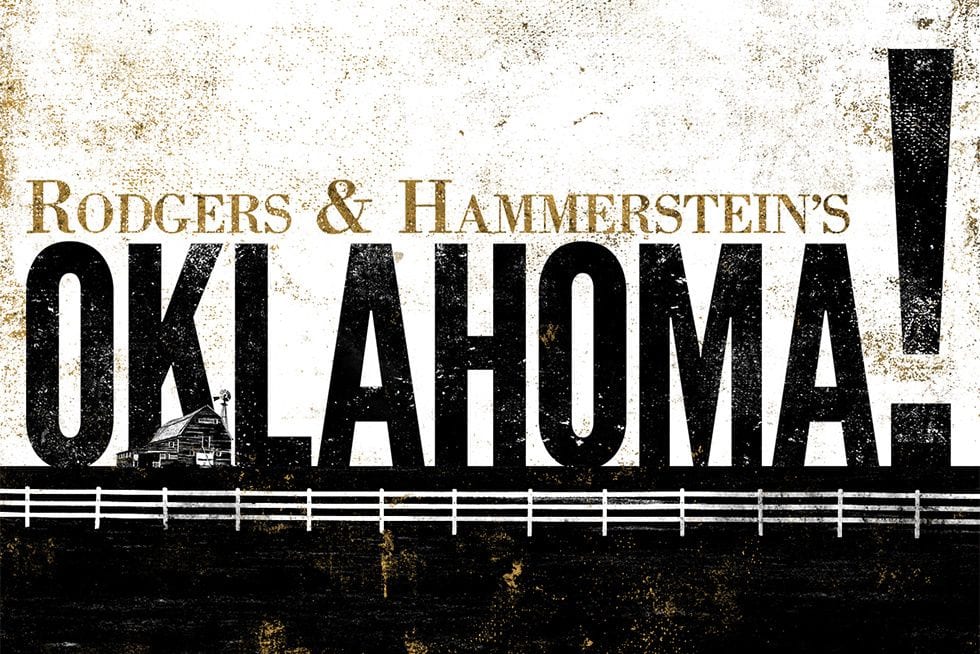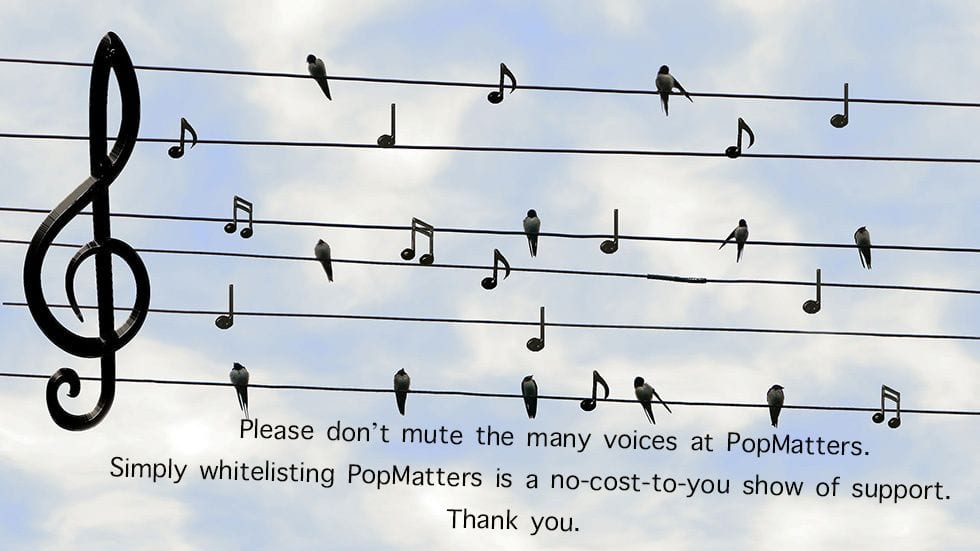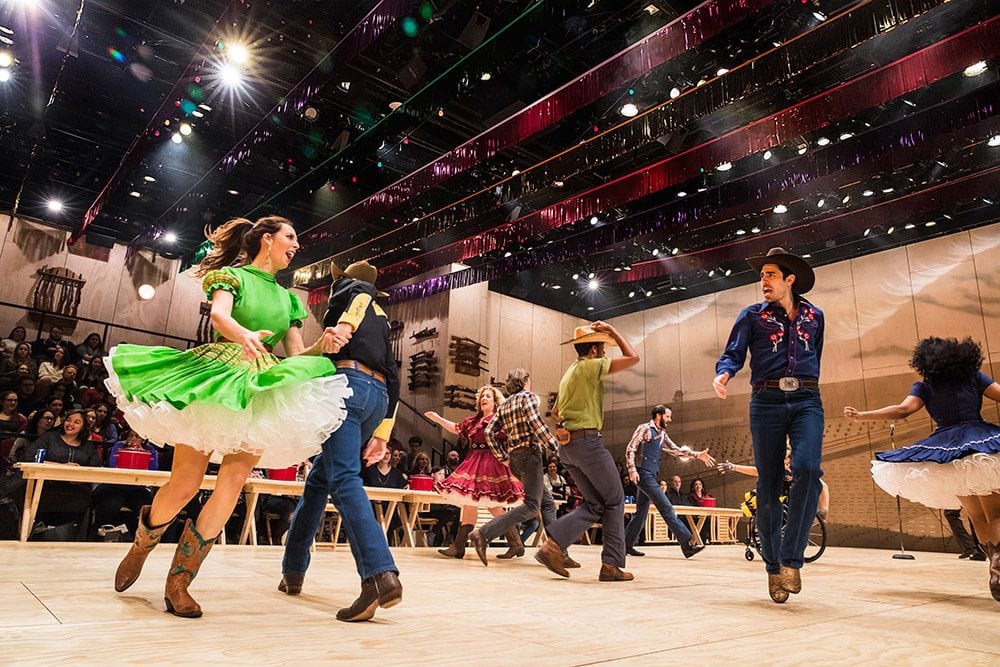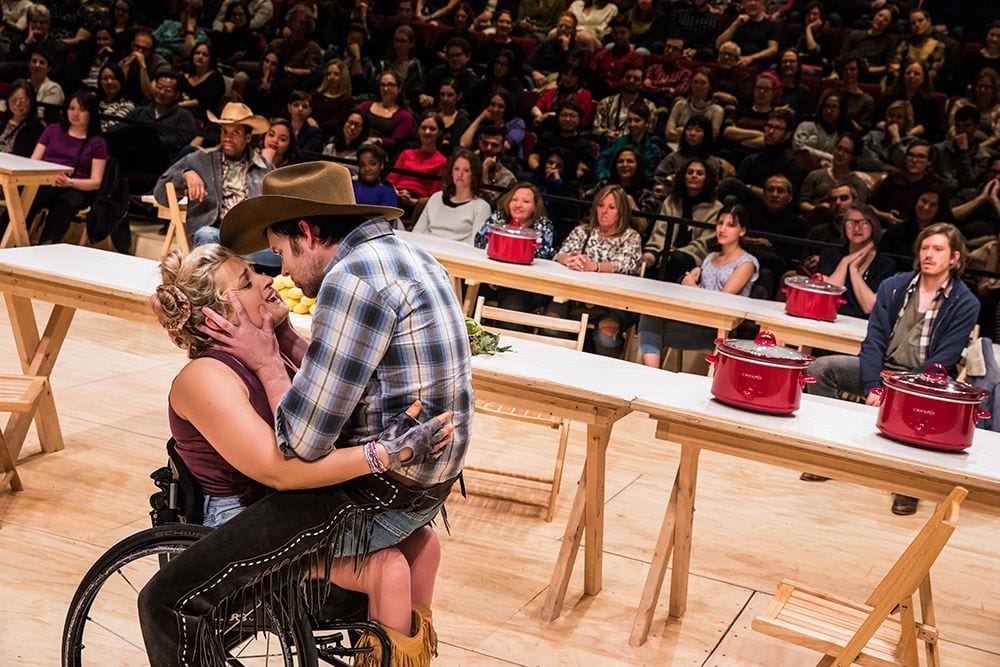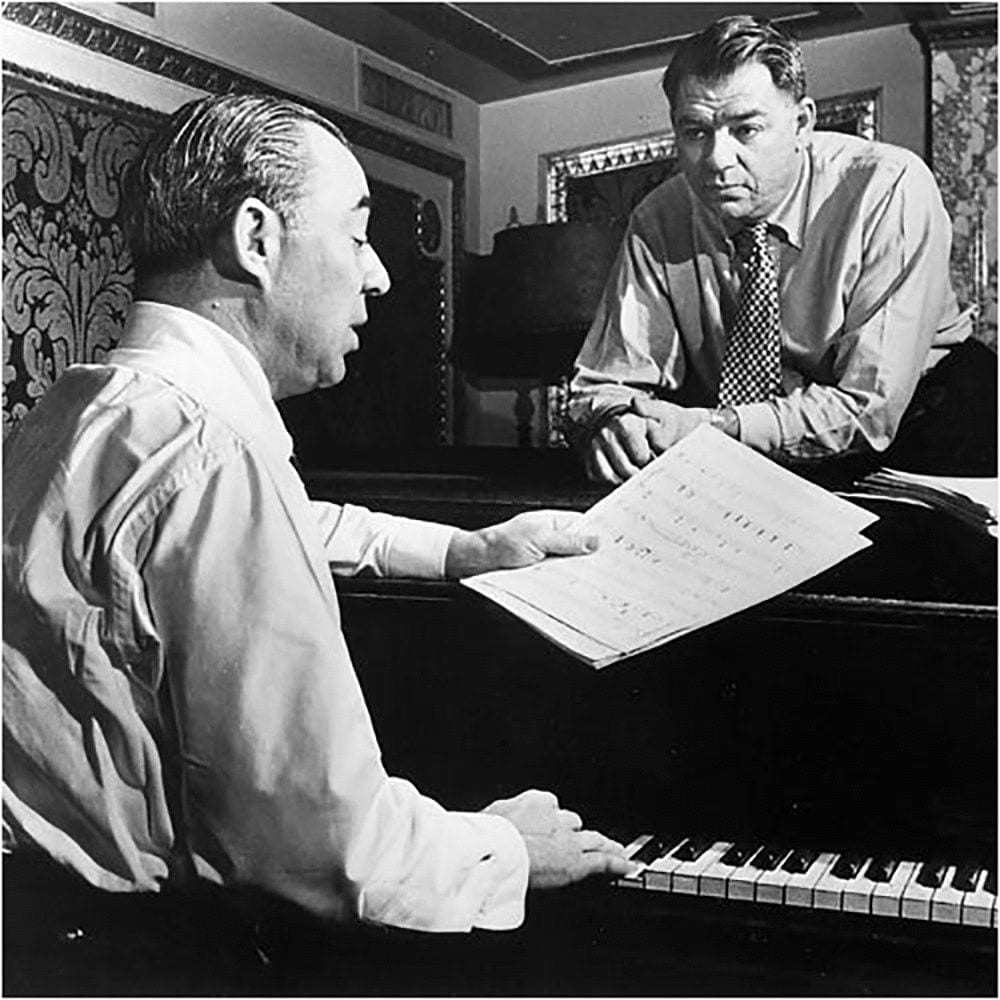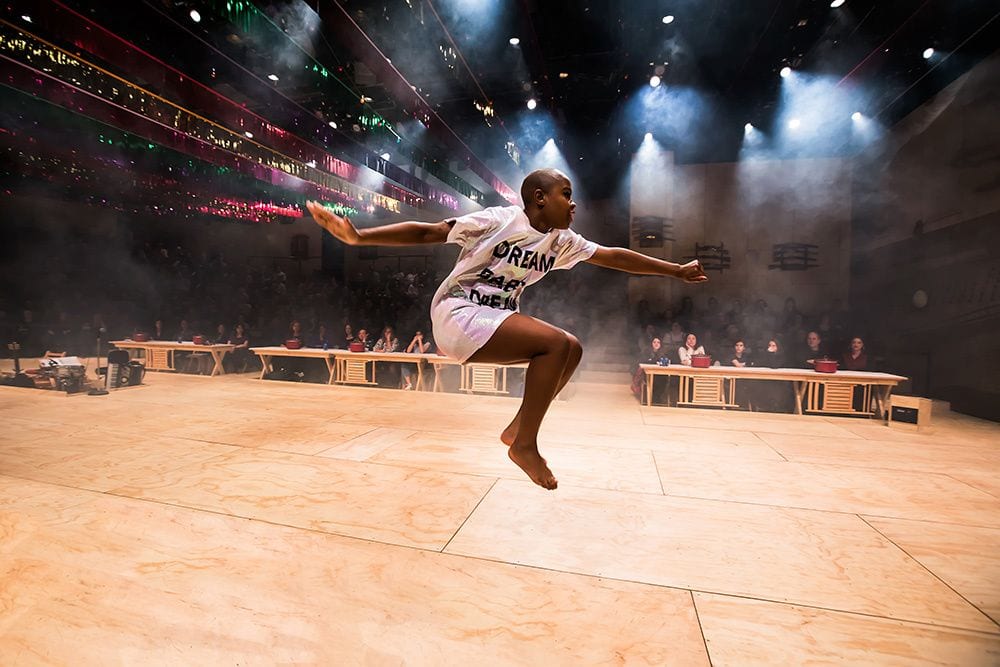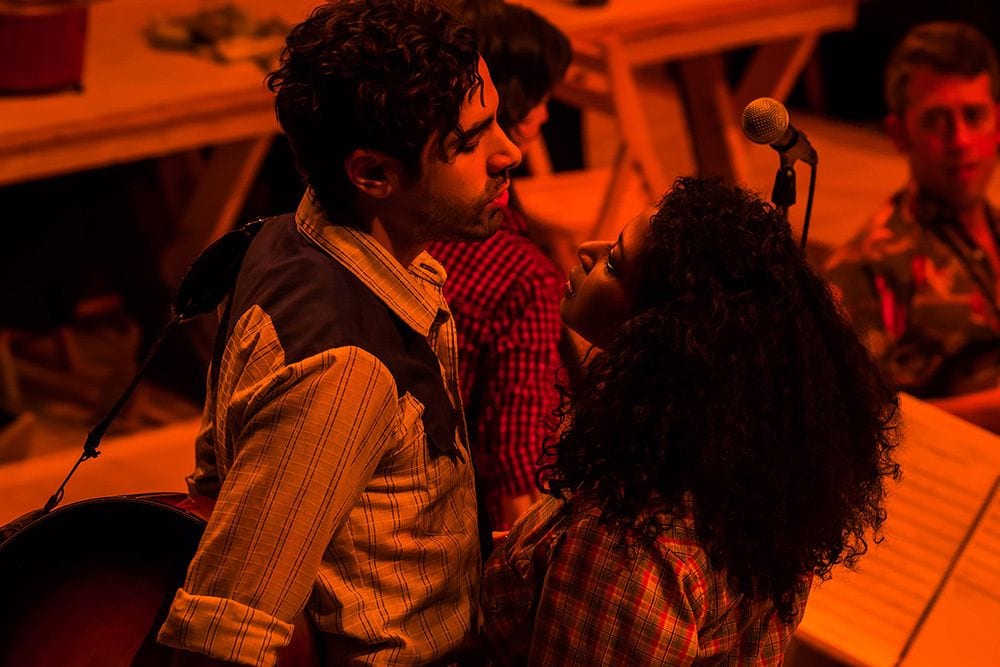“Oh, what a beautiful morning!”
One of the salient myths of the United States is the ostensible capacity for anyone to begin anew. This national myth, which can be understood as a form of US exceptionalism, asserts that the past can be categorically left behind. This individual capacity even extends to the nation-state. In 1984, in the throes of interlocking economic, political, and economic crises, Ronald Reagan famously declared that “It’s morning again in America“. This trope to start anew is something of a national birthright. Rather than recognize and wrestle with how the past actively shapes present institutions and geographies, the ideology to start anew champions the merits of forgetting. Or perhaps it’s better to say, repressing.
This national myth is encapsulated in the opening song of Richard Rodgers (1902–1979) and Oscar Hammerstein II‘s (1895–1960) 1943 Broadway musical Oklahoma!:
Oh, what a beautiful morning,
Oh, what a beautiful day,
I’ve got a wonderful feeling,
Everything’s going my way.
These lyrics and music of optimism blare from the mouth of a white male as he’s riding through the “virgin” land of Oklahoma, which, when the play is set in 1906, had not yet been formally incorporated into the United States. Rodgers and Hammerstein crafted a profoundly political play set a year prior to Oklahoma becoming the 46th state of the ever-expanding union. Oklahoma!, in other words, dramatizes the transition from “frontier” to “statehood”.
Who, the play asks, becomes incorporated into the nation’s imagined community? For whom is America a “beautiful morning” offering boundless opportunities? For whom is the state of Oklahoma a signifier sung with exuberance, an affect grammatically marked by the exclamation point at the title’s end?
These are questions inextricable from formations of race and gender.
When the play opens and a white man sings with confidence that the world was made for him, he sings from a deeply white perspective. But Oklahoma! does not share this privileged ideology. Rather, the musical critiques it.
Rogers and Hammerstein were radical cultural producers, dramatizing and critiquing a range of social conflicts including racism, misogyny, and imperialism. Todd S. Purdum, author of Something Wonderful: Rodgers and Hammerstein’s Broadway Revolution (Henry Holt and Co., 2018), opines that Oklahoma! is “as radical in its way as Lin-Manuel Miranda’s Hamilton would be more than seventy years later“.
The play opens with a white man traversing confidently through the Oklahoma territory, implicitly declaring ownership. This ideology of possessiveness is made explicit in the play’s closing, titular song. In the original production, an entire white cast sang with jubilation: “We know we belong to the land / And the land we belong to is grand!” Oklahoma!, though, asks audiences to see beyond the celebratory rhetoric, rousing anthems, and aesthetics of exclamation points, and instead to see the myriad violences at the heart of the nation-state’s formation.
Daniel Fish‘s 2019 Broadway revival of Oklahoma! brilliantly realizes this decolonizing mission. Fish makes us see the violences saturating and defining the land.
The theme of violence is foregrounded before the play even properly begins. When audiences enter Circle in the Square Theatre in New York City, they are surrounded by guns mounted to the walls. How audience members respond to being fenced in by guns is telling. For those excited to revel in the musical’s canonical songs, these myriad guns may enhance the celebratory mood. (It’s interesting that for many, multiple guns can signify setting rather than instruments of mass violence.) But for those who recognize the play’s trenchant critique, this design enhances the horror intrinsic to the show.
Laura Jellinek‘s brilliant set design inundates the audience with violence and death, visualizing Richard Slotkin’s thesis that America are a “gunfighter nation“. Jellinek’s design foregrounds how the nation-state was born and realized through technologies of violence. However, most of the production choices explicitly invite audiences to join the play’s structure of feeling, to become members of the small-town community singing and dancing on stage.
In my book, Main Street and Empire: The Fictional Small Town in the Age of Globalization (Rutgers University Press, 2012), I analyze how the ideological small town was used to stage normative US bodies and narratives from the 19th- through the 21st century. In this 2019 production of Oklahoma!, the drama’s small-town setting is enhanced and the audience is invited to participate and affectively belong to this fictional community.
Indeed, Oklahoma! aesthetically invites audiences to enter its communal structure through various production choices. First and foremost, the production unfolds with the house lights up. Rather than cloak the audience in darkness and allow them to passively slip into anonymity, this production keeps all the house lights on, blurring the boundary separating performers and audience members. If the purpose of lighting is to control the audience’s focus, illuminating everyone makes everyone equally valid and welcome into the play’s communal structure. Circle in the Square Theatre’s production, performed in the round, makes everyone equally visible, and throughout the show’s canonical songs, multiple audience members can be seen clapping their hands, stomping their feet, and singing along, mimicking and mirroring the action “on-stage”.
The diverse casting of Oklahoma! suggests that this communal setting is one of open hospitality. One of the show’s protagonists, Laurey, is played brilliantly by Rebecca Naomi Jones, whose father is African American, and the sex-positive Ado Annie is played by the outstanding Ali Stroker, an actor who recently made history by becoming the first actor in a wheelchair to be nominated for a Tony Award.
This sense of belonging is highlighted during the intermission. Rather than take a break from the musical’s fictional world, audiences are invited to step onto the stage to consume the chili that was being prepared onstage since the show began.
At the halfway point, audiences are invited to cross a sacred aesthetic boundary that typically separates performers from audience members. Standing on stage, occupying the same space and eating the same food as the performers aesthetically reinforces the audience’s sense of communal belonging.
But Oklahoma! has never been about uncritical belonging. Rather, it interrogates the affective and ideological borders of belonging.
Rodgers and Hammerstein are both descendants of European Jewish immigrants. (Rodgers’ original family name was Rogazinsky.) Both would have been excluded from the white, Protestant community at the play’s center. A show that begins with a white man singing “everything is coming my way” and ends with everyone singing “we belong to the land” is one that is knowingly framed by the frightening politics of belonging. Originally produced during the Holocaust as fascism spread throughout Europe, and nativism spread in the United States as Jim Crow policies multiplied and more than 110,000 Japanese Americans were relocated to concentration camps, Oklahoma!‘s exploration of belonging was a conspicuously political one.
For those who feel at home in Oklahoma!‘s communal setting and songs, the play can be experienced as a form of “authentic”, nostalgic Americana. Even in its original production, the musical whisked audiences back four decades. This aesthetic return to history is either experienced as a nostalgic journey of joy or one saturated in darkness. Fish’s production highlights the latter and forecloses the former.
The denial of nostalgia becomes explicit after the intermission when audiences are emphatically thrust out of any potential identification and feelings of belonging.
In the original 1940s production, a 15-minute “dream ballet” ends the first half in which one of the musical’s central characters, Laurie, struggles with her conflicting feelings towards her two suitors: Curly and Jud. But in Fish’s re-imagining, this ballet sequence, which originally focuses on romantic love, is replaced by a searing, modern political ballet.
In Fish’s production, the ballet is shifted until after the intermission, after many audience members have fully entered—both figuratively and literally— the small town’s communal structure. Fish doesn’t just change the ballet’s placement, though; he radically refigures the “dream ballet”, turning it into what might be called a “nightmare ballet”.
When the second half begins, billows of smoke blanket the stage. From the smoke emerges a modern figure: an African American woman (Gabrielle Hamilton) with a shaved head wearing a glittering, oversized shirt with the words “Dream Baby Dream” emblazoned on the front. Despite the blind-casting on display in the play’s first half, in the second half, the proudly and defiantly black presence of Hamilton makes explicit that Oklahoma! is a white space despite the diverse casting. Hamilton is a body and performer who doesn’t belong to the small town, who would likely be excluded from the frontier. Violently.
The second act begins like the first act with a rendition of “Oh, What a Beautiful Morning”. But the arrangement is not a return but a revolution. In Fish’s production, a seven-piece bluegrass band is on-stage the entire first act. However, when the second act begins, the stage is barren and the lights are dimmed.
As we watch Hamilton’s brilliant and challenging dance performance, an electric guitar radically reinterprets the canonical opening song. In some ways, this electric interpretation is analogous to Jimi Hendrix’s rendition of “The Star-Spangled Banner” at Woodstock. In dominant circles, “Oh, What a Beautiful Morning” is an indelible part of the national canon, becoming something of a sacred text. This electric version radically changes the way audiences hear, understand, and experience the song. In the first act, audience members are implicitly invited to sing along and identify with the song. In the second half, such participation is foreclosed. The audience must now listen and wrestle with the complex configuration of the jolting modern ballet.
This modern ballet, anchored by Hamilton’s defiantly black and queer performance accompanied by the distorted, lyric-free rendition of “Oh, What a Beautiful Morning”, signifies the unspoken, violent history haunting the play. This signified violence becomes heightened when, inexplicably and suddenly, a deluge of boots fall from the ceiling, landing onstage with violent thuds as Hamilton performs.
This configuration of Hamilton’s body, the distorted musical interpretations, and the boots suddenly and hauntingly marking the floor artistically evokes a range of racialized violences. Perhaps immediately, the boots dropping from the ceiling signify lynching. The boots violently dropping to the ground artistically signify the thousands of black bodies lynched throughout the United States in the first half of the 20th century, and in Oklahoma in particular. The ballet makes us see that looming above the community of whiteness at the narrative’s center are thousands of tortured and murdered black bodies.
This modern ballet—a shock to the original script that nevertheless keeps with its spirit—evokes a range of racist, violent histories that the play’s central characters actively repress, including the multiple broken treaties with Indigenous Americans resettled in “Indian Territory“, the territory that officially became Oklahoma. Moreover, the modern ballet signifies racist, violent histories that many white audiences repress about the state, including the Tulsa massacre of 1921.
The 2019 re-imagining of Oklahoma! insists that audiences recognize that the history and geography of the United States are saturated in blood. During the concluding song, which is typically rousing with everyone singing, “We know we belong to the land / And the land we belong to is grand!”, two of the central characters are coated in blood. This visual shock changes the way we hear the titular song and forces audiences to reconsider a musical that is too often embraced as nostalgic Americana.
Fish’s production visualizes that history hurts and bleeds. And he dramatizes how no rousing song can wipe away the stains that continue to define the American present.

